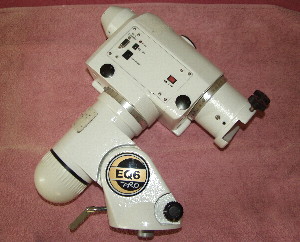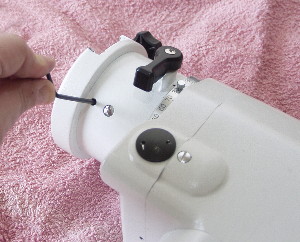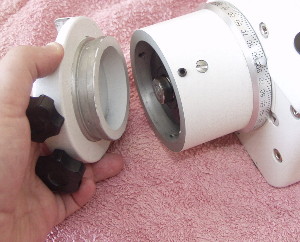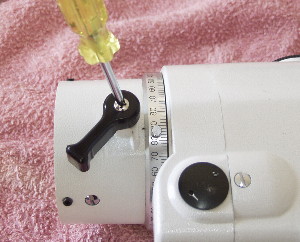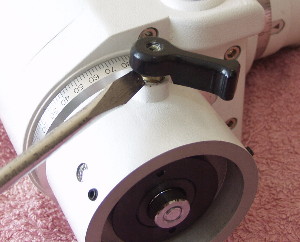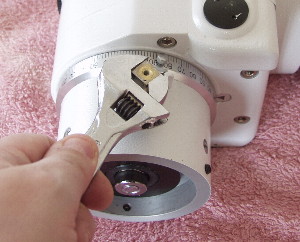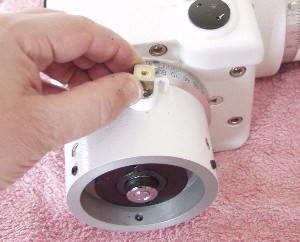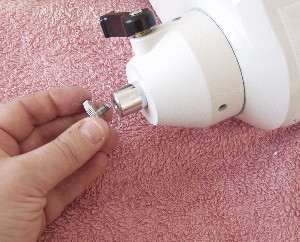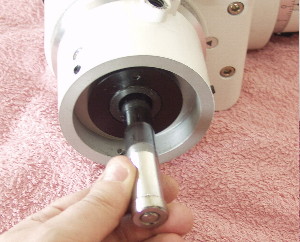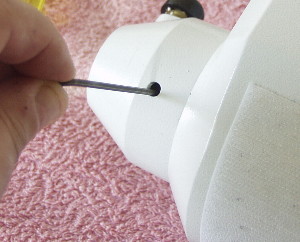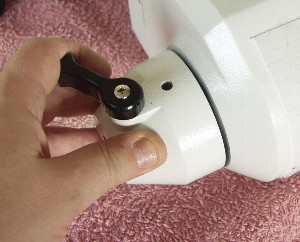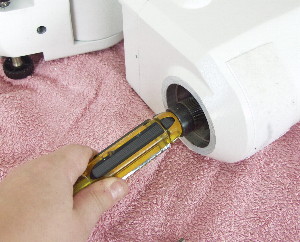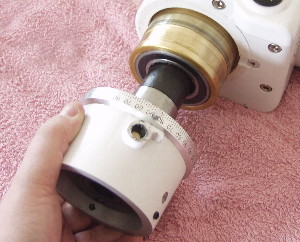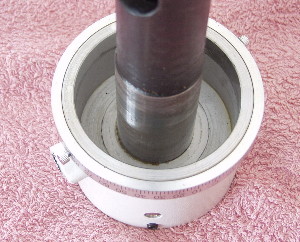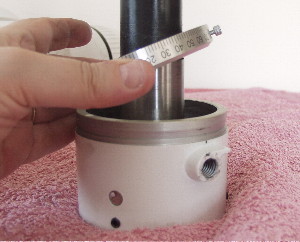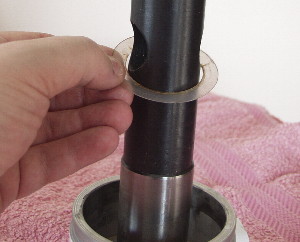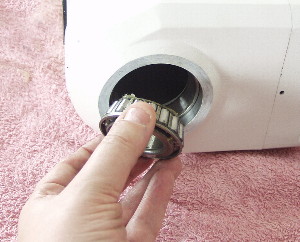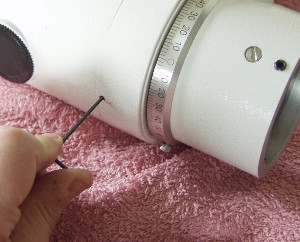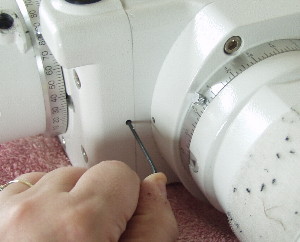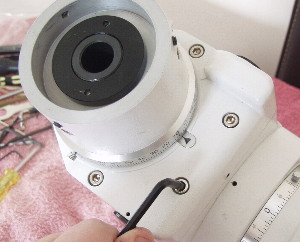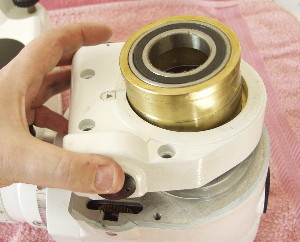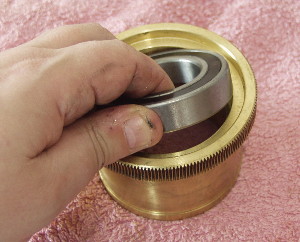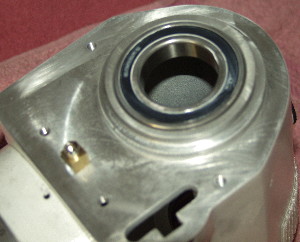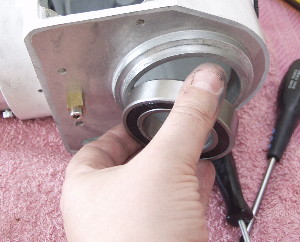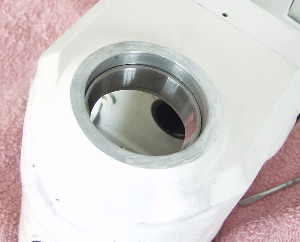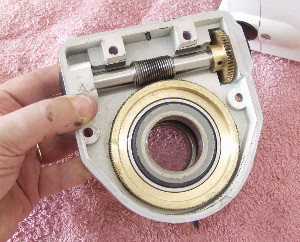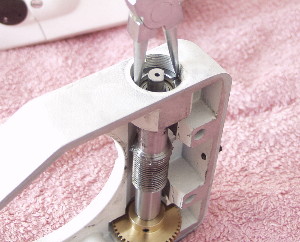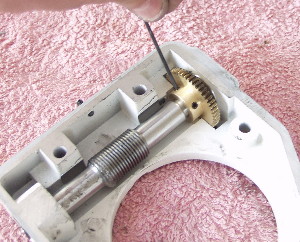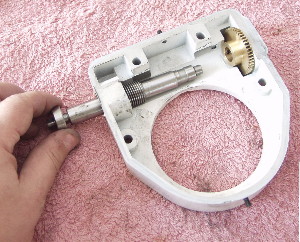|
Strip Down and Cleaning of the Declination Axis
| Synta EQ6 / Orion Atlas – Stripping & Cleaning the Declination (DEC) Axis |
To carry out this procedure you will need a good assortment of tools including cross head and Phillips screwdrivers, a rubber or nylon mallet, a soft toothbrush,
degreasing agent, metric Allen keys, long nosed pliers, lots of lint free cloths and lithium grease.
I found commercial degreasing agents somewhat ineffective and resorted to using good old hot soapy water. Lithium grease is easily available from shops
selling bicycles. Its also advisable to have a large soft towel or similar to lay the mount on while working on it to protect its external finish.
I would strongly advise you do not attempt this procedure without reading it through a few times in advance to understand the process. The procedure takes
around 4 hours from top to bottom (but read the observations at the bottom of this page) unless you are very confident of what you are doing and have exactly the right tools.
Its definitely best to have someone around to help you with some elements of it – remember take your time and when in doubt STOP and THINK.
Take a break when tired because you don’t want to bodge anything.
The DEC and RA worm gear adjustment process required after re-assembly can be quite lengthy as its very much trial and error so bear this in mind before
starting and allow plenty of time to carry out the procedure – it will pay dividends in terms of smooth and precise running and longevity of the mount.
| Stage 1 – Stripping the Dec Axis |
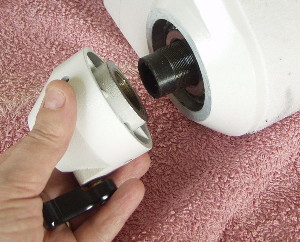
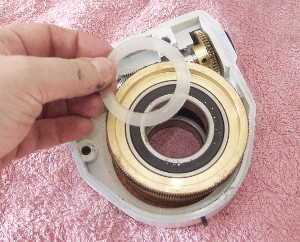
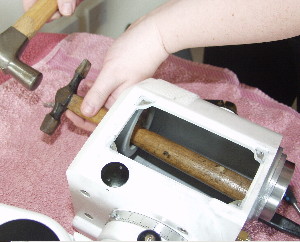
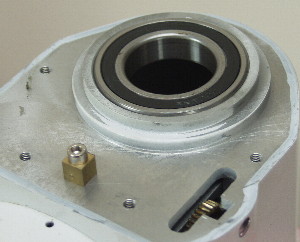
You can also see here the motor gear. At this stage in the strip down I removed the motors. You can see this process HERE
| Stage 2 – Stripping the Worm Carrier |
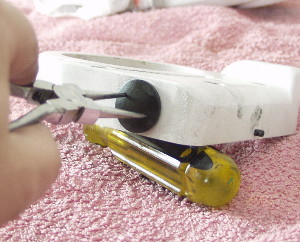
Note: These were incredibly difficult to shift on this mount and in the end it required two of us. One to hold the circlip pliers into the holes and one to insert a large screwdriver between the tips of the pliers to act as a lever.
| Stage 3 – Cleaning & Lubrication |
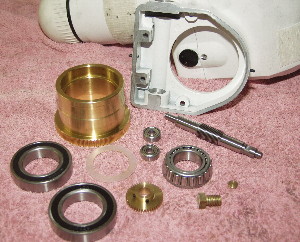
The brass worm gear, its roller bearings, the tapered bearing plus the worm and its end bearings and motor gear all cleaned and awaiting greasing and reassembly.
With a clean lint free cloth now wipe all the excess oil from the components. On this mount the roller bearings and the worm roller bearings were sealed and appeared to be well lubricated so were left alone.
The tapered bearing had almost no lubrication and so was cleaned and relubricated with lithium grease.To lubricate bearings put a blob of grease onto the palm of your hand and press the bearing into it and then rotate the bearing around forcing the grease into the inside of the bearing.
The brass worm gears and steel worm along with the woprm carrier casting should all be cleaned in a degreasing agent. I personally find really hot water and a basic detergent works best. These items were then cleaned with a soft toothbrush and then rinsed and left to dry. All of the gears showed either little lubrication and/or engineering swarf though none of the legendary black ‘goop’ that is supposed to be used in Synta mounts.
The worm carrier had its edges cleaned by the gentle application of some emery cloth to remove the loose flakey paint and to smooth the facing edges to the mount. You should do this by placing the emery cloth flat on a perfectly smooth surface such as glass and gently, with a rotating motion rub the work carrier around the cloth.
The declination (DEC) axis prior to strip down showed a fair amount of play. On strip down the DEC assembly came to pieces rather easily. The cap headed bolts on the worm carrier were extremely tight and in the end I required a socket set with a long tommy bar to remove them. Similarly the worm gear roller bearing covers were also done up extremely tightly. The top of the DEC assembly showed a large amount of paint flecks on the bearings and their faces as well as something that resembled ground up sand in the lubrication. I suspect this was paint. If you look at the worm carrier you can see two areas inside the carrier immediately next to the worm that have no paint. The RA worm carrier had paint in these areas. My HEQ5 showed the same and in fact had retained one of the piece of paint which was like a large shard of very hard enamel. I can only speculate that on this EQ6 the paint flakes had, over time, been ground up in the worm gears. The worm and its associated gears showed very little lubrication as did the taper bearing at the base of the DEC axis. In fact the worm gear appeared resistant to grease when first removed rather as if it had been in contact with some kid of de-greasing agent. After cleaning it was fine. Paint spray was removed from the top of the RA axis and its bearing and bearing faces and components re-lubricated. The main roller bearings were well lubricated inside their dust caps and apart from cleaning the exteriors of any contamination were left alone.

